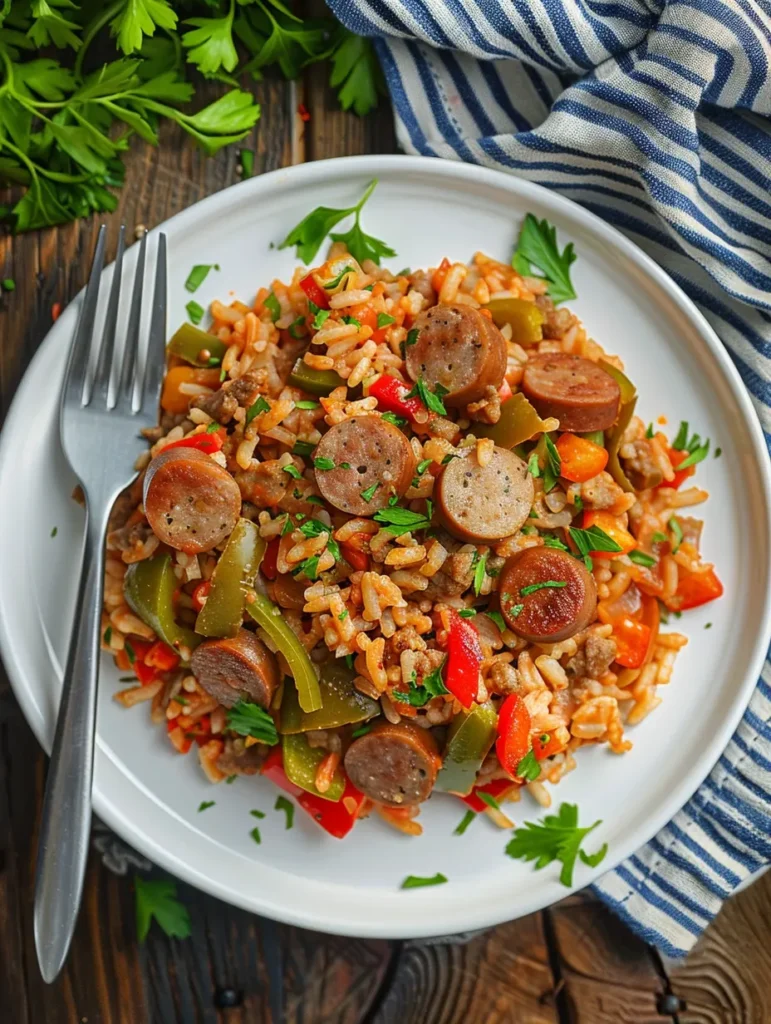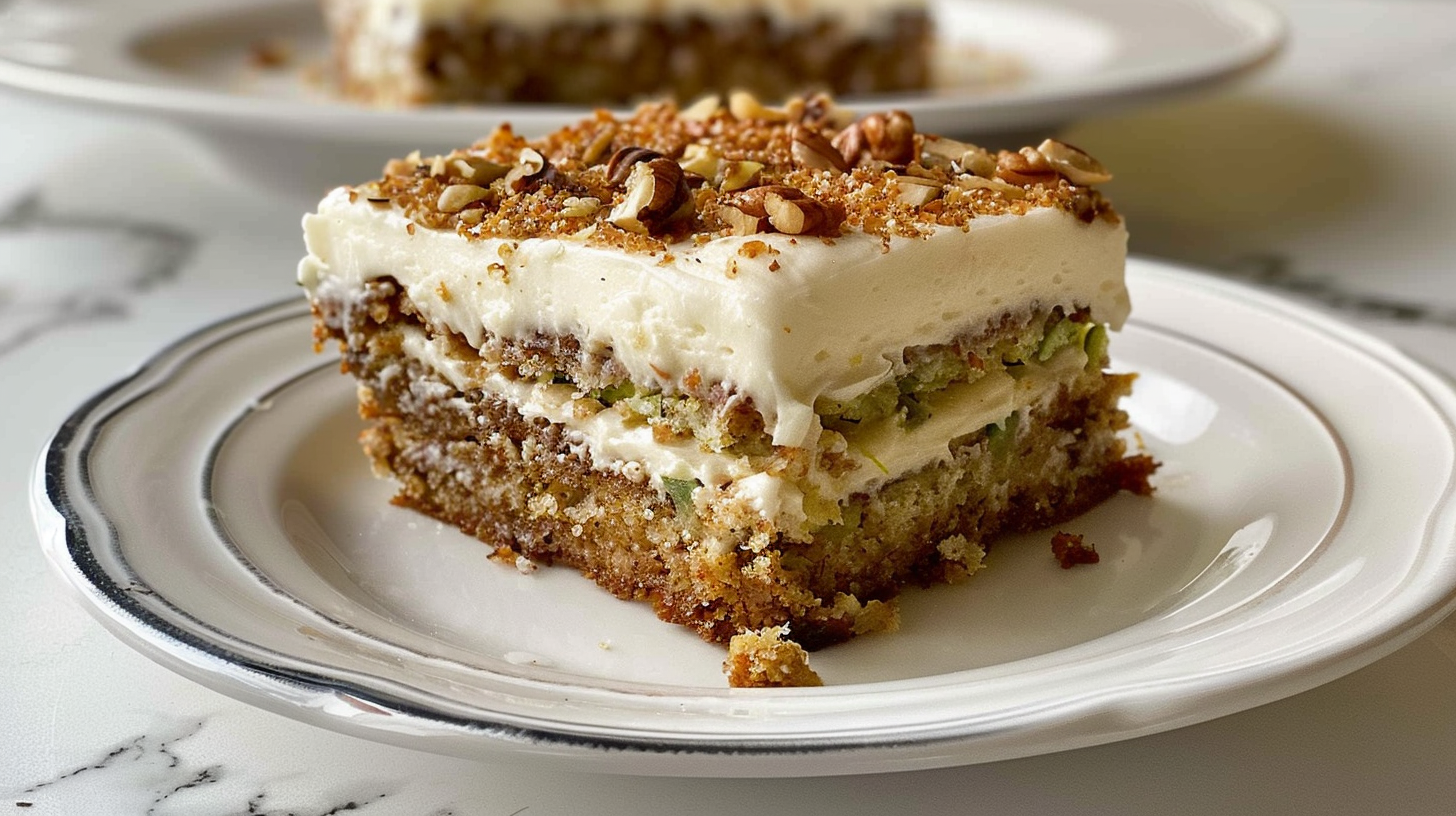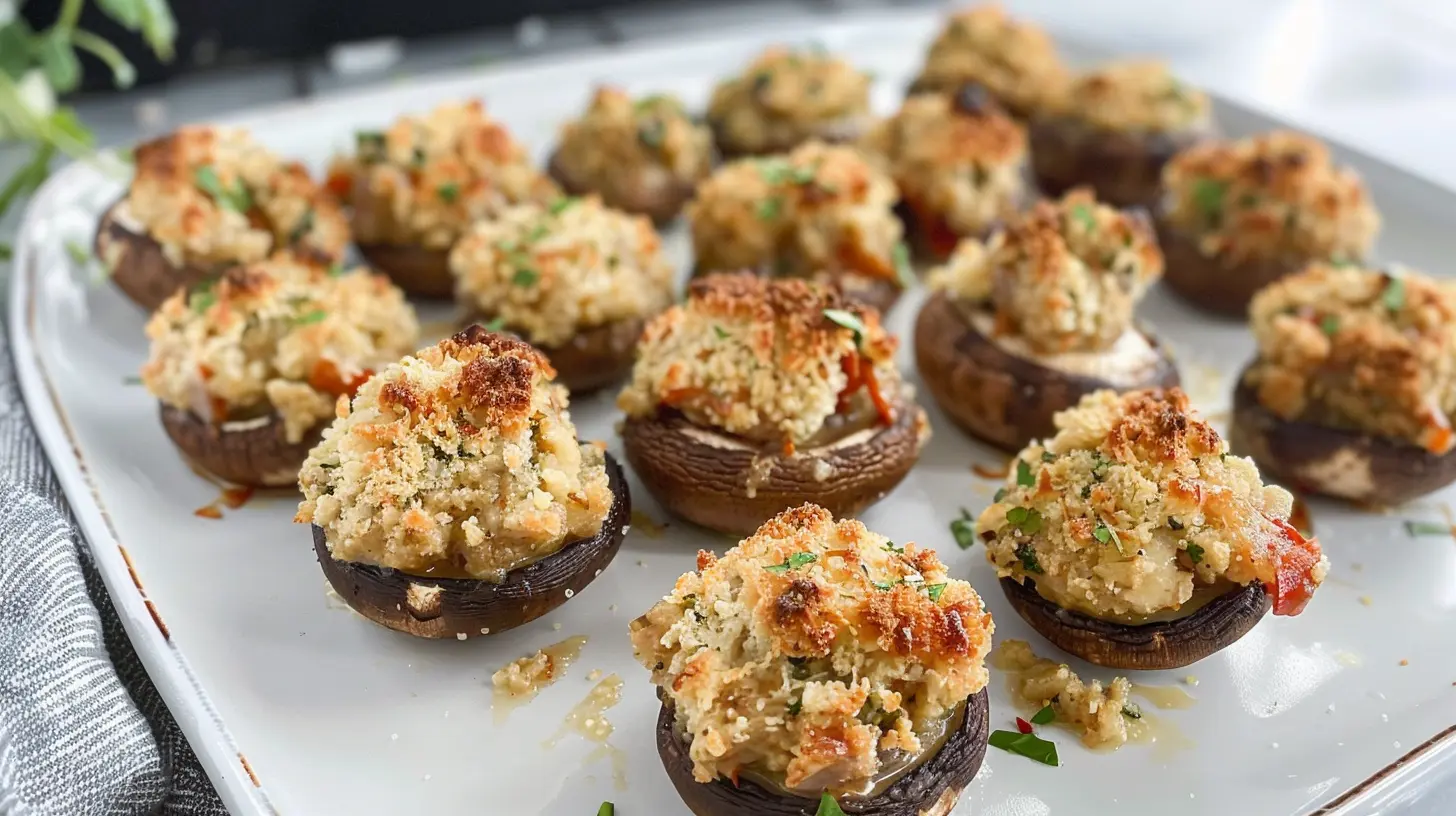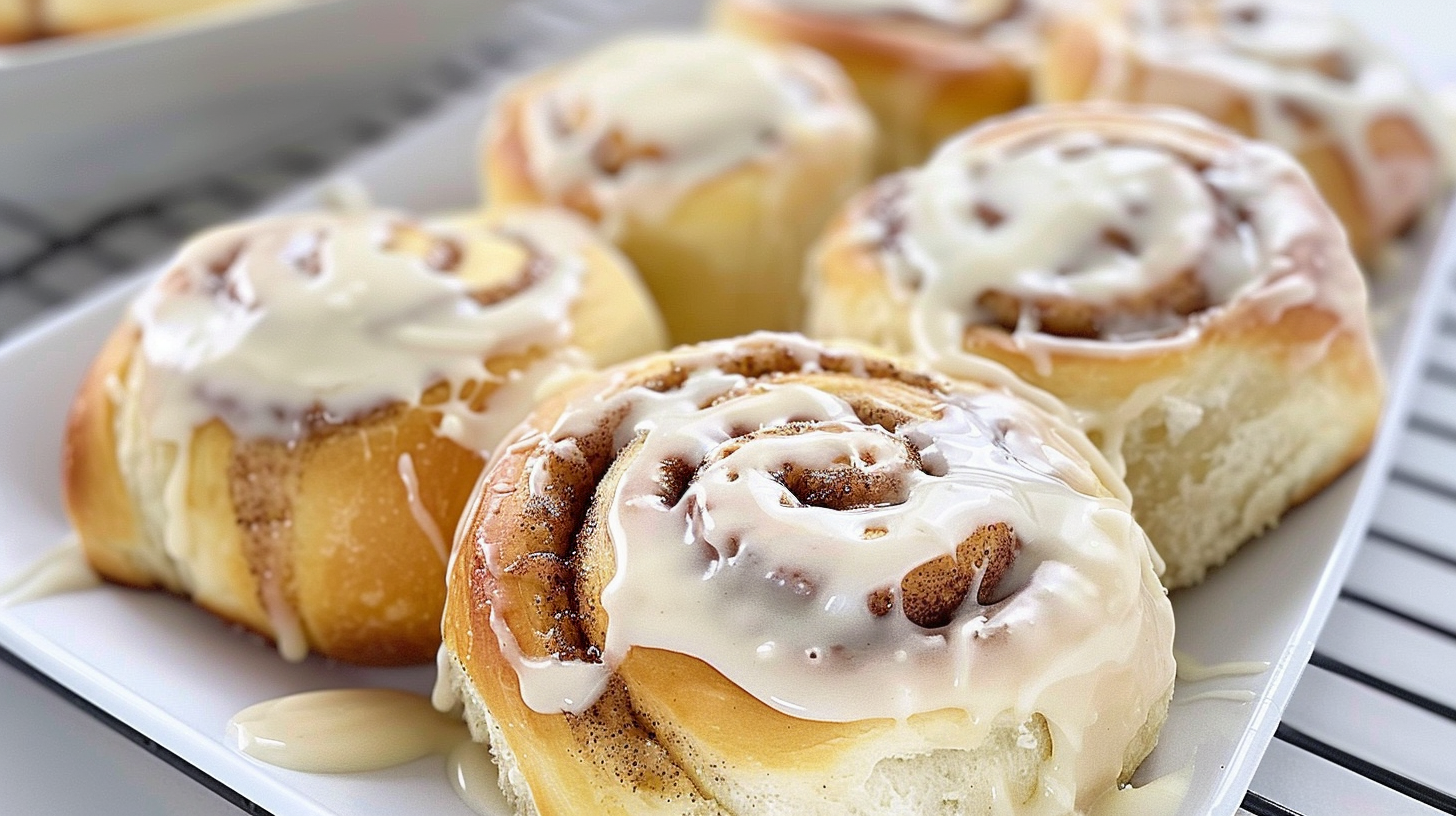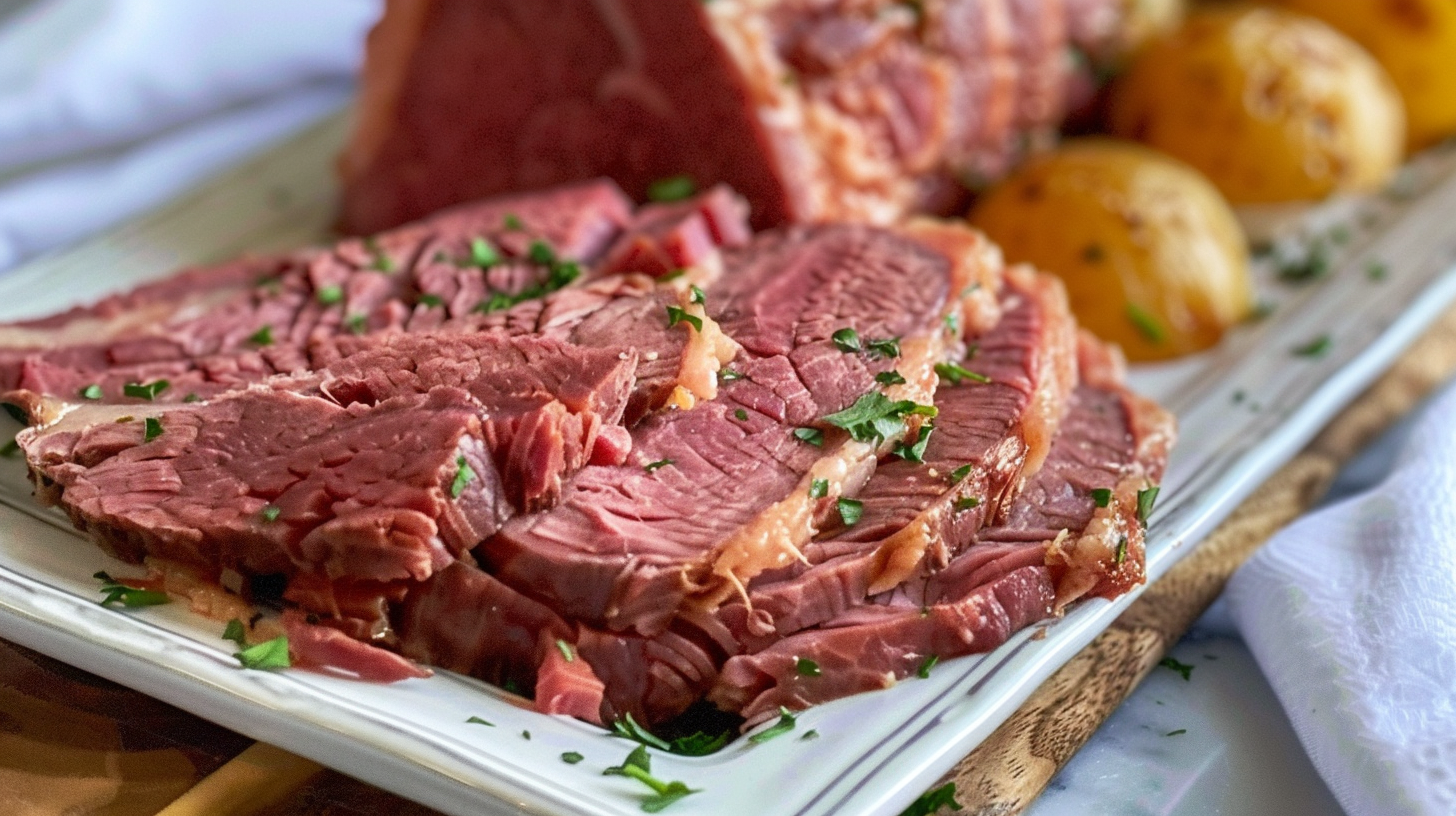Table of contents
Introduction to vegan jambalaya recipe
Jambalaya, a classic dish from the Southern United States, particularly Louisiana, is typically known for its rich flavors and hearty mix of meat, seafood, vegetables, and rice. However, the vegan version of Jambalaya offers a plant-based twist to this beloved recipe, making it accessible to those following a vegan lifestyle while retaining the vibrant, spicy essence that the dish is famous for.
This vegan jambalaya recipe replaces traditional meats with vegetables and plant-based proteins like beans or tofu, infused with a bold blend of spices and herbs. It’s cooked in a single pot, where aromatic vegetables like onions, bell peppers, and celery meet tomatoes and a flavorful stock. Adding spices such as Paprika, Thyme, Cayenne Pepper, and a hearty rice base transforms the mixture into a colorful, comforting meal.
Vegan Jambalaya is a satisfying and nourishing alternative that pays homage to its roots with every spicy, smoky spoonful, perfect for a family dinner or as a festive addition to a gathering.
The vegan jambalaya recipe is a fascinating culinary endeavor due to its ability to adapt a traditional Southern dish to meet modern dietary preferences. This recipe is particularly relevant as it aligns with the growing trend towards plant-based eating, catering to those who choose a vegan lifestyle for health, ethical, or environmental reasons. By replacing animal products with plant-based alternatives, this version of Jambalaya offers a lower-fat, cholesterol-free option rich in nutrients, making it a healthier choice that doesn’t compromise flavor.
Vegan Jambalaya: Embracing Tradition and Versatility in Creole Cuisine
Cultural Significance
Culturally, Jambalaya is a significant dish in Louisiana Creole cuisine. It is traditionally packed with a mix of meats and seafood, which tells the story of the various ethnic influences in the region, from French and Spanish to African. The vegan version maintains these cultural connections by preserving the core flavors and cooking techniques while making the dish accessible to a broader audience.
Seasonal Versatility
This recipe is also seasonally versatile, perfect for cozy winter meals and vibrant summer gatherings. Its rich array of spices and hearty texture makes it satisfying in colder months, while its use of fresh vegetables and potential for customization, like incorporating seasonal produce, makes it equally appealing in warmer weather.
Contemporary Appeal
Overall, vegan Jambalaya is a nod to a rich culinary tradition and an example of how classic dishes can be reimagined for contemporary, health-conscious diners. Its inclusivity and adaptability make it a standout choice for everyday meals and special occasions, appealing to anyone looking to explore the depths of Creole cuisine without animal ingredients.
Ingredients and Substitutions for Vegan Jambalaya
Here’s what you’ll need to make vegan jambalaya:
- Rice – One and a half cups of elongated-grain rice, such as Basmati or Jasmine
- Vegetable Broth – 3 cups, preferably low-sodium
- Tomatoes – 1 can (14.5 oz) of diced tomatoes, with juices
- Bell Peppers – 1 green and 1 red, diced
- Onion – 1 large, diced
- Celery – 2 stalks, diced
- Garlic – 3 cloves, minced
- Green Onions – 1/2 cup, chopped, for garnish
- Parsley – 1/4 cup, chopped, for garnish
- Red Beans – 1 can (15 oz), drained and rinsed (can substitute with kidney beans)
- Okra – 1 cup, sliced (fresh or frozen)
- Vegetable Oil – 2 tablespoons, for sautéing
- Cajun Seasoning – 2 teaspoons, adjust to taste
- Smoked Paprika – 1 teaspoon
- Dried Thyme – 1/2 teaspoon
- Bay Leaves – 2
- Cayenne Pepper – 1/4 teaspoon, adjust for heat preference
- Salt and Pepper – to taste
Important Notes About Specific Ingredients: Vegan Jambalaya
- Organic Ingredients: For those who prefer organic products, vegetables, and rice can be sourced organically to ensure the dish is free from pesticides and genetically modified organisms.
- Allergen Substitutions: If you need to avoid garlic or onions due to allergies, consider using asafoetida powder (also known as hing) in small quantities. It’s crucial to note that he can be potent, so use sparingly. You can skip bell peppers and add other vegetables like zucchini or extra okra for those allergic to bell peppers.
- Gluten Concerns: If you follow a gluten-free diet, ensure that the vegetable broth and Cajun seasoning are gluten-free. Some brands might contain gluten-containing additives or seasonings.
This expansive enumeration and observations on alternatives and innate inclinations aid in customizing the vegan Jambalaya to cater to various dietary requisites and preferences, enhancing its adaptability and appeal to a broad audience.
Herein lies a meticulous, sequential exposition on the art of concocting and colonizing vegan Jambalaya:
Equipment Needed
- Large pot or Dutch oven
- Cutting board and knife
- Measuring cups and spoons
- Wooden spoon or spatula
Ingredients Preparation
- Prepare your assortment of produce: Segment the bell peppers, onion, and celery into cubes. Pulverize the garlic. Segment the okra into rounds. Meticulously sever the green onions and parsley to adorn your dish later.
Cooking Process
Sauté the Vegetables:
- Warm the plant-derived lipid in a capacious cauldron or casserole vessel atop a moderate flame.
- Incorporate the cubed onions, capsicum, and celery into the cauldron. Sauté these components, agitating periodically, until the vegetables attain a tender state and the onions manifest a translucent quality, approximately five to seven minutes.
- Incorporate the finely chopped garlic, permitting it to sizzle briefly—about sixty seconds—until it emanates a rich, aromatic bouquet.
Add Dry Ingredients:
- Stir in the Cajun seasoning, smoked Paprika, dried Thyme, and cayenne Pepper. Cook for 1 minute to let the spices release their flavour.
- Add the rice to the pot and stir well to coat it with the oil and spices, cooking for about 2 minutes.
Incorporate Fluids and Maintain a Simmer:
- Incorporate the cubed tomatoes along with their liquid and the vegetable consommé. Agitate to amalgamate.
- Incorporate the laurel fronds and escalate the concoction to a vigorous ebullition.
- Upon reaching a rolling boil, turn down the flame to a mere whisper, envelop the vessel, and maintain a gentle simmer for twenty minutes or until the grains are nearly al dente.
Add Beans and Okra:
- Incorporate the segmented okra and scarlet legumes into the mixture. Envelop and gently stew for an additional decennium of minutes or until the grains have swelled completely and the okra has softened.
- Suppose the Jambalaya looks too dry during cooking. In that case, you can add more broth or water to achieve the desired consistency.
Seasoning Adjustments and Finish:
- Remove the bay leaves and discard them.
- Taste the Jambalaya and adjust the salt, Pepper, and additional Cajun seasoning or cayenne pepper to suit your taste.
Garnish and Serve:
- Just before serving, sprinkle the chopped green onions and parsley over the top for added flavor and color.
- Serve hot, allowing everyone to scoop their portion.
Cooking Times and Temperature Settings
- Total preparation time for vegetables: about 10-15 minutes.
- Cooking time: approximately 40 minutes (5-7 minutes for sautéing vegetables, 2 minutes for toasting rice, 20 minutes for simmering rice, 10 minutes for final simmering with beans and okra).
Tips
- Consistency Check: The ideal Jambalaya has a moist but not soupy consistency. Adjust the amount of broth as needed depending on how much liquid the rice absorbs.
- Heat Level: Cajun dishes are known for their heat. Start with the recipe’s cayenne amount and adjust for more spice if desired.
This vegan Jambalaya is a filling, flavorful dish that is perfect for a family dinner or to impress guests with your cooking skills. Enjoy the textures and the depth of flavor from the spices and fresh vegetables!
To accommodate different tastes and dietary restrictions, here are some possible variations and substitutions for the vegan jambalaya recipe:
Gluten-Free Adjustments:
- Choose vegetable broth and a Cajun seasoning label to ensure your dish is gluten-free, as some brands may include gluten-containing additives. Alternatively, you can create your own Cajun seasoning using individual spices.
Protein Variations:
- Diversify your protein sources by opting for tofu or tempeh instead of legumes. Cube and pan-fry them with the greens to add texture and protein to your dish. Alternatively, vegan sausage can be a flavorful addition; slice and brown it before incorporating it into your Jambalaya for a smoky touch.
Low-Sodium Options:
- For a low-sodium version, use low-sodium or no-salt-added vegetable broth and no-salt-added canned tomatoes. Adjust the Cajun seasoning by reducing its amount or making your own to control the salt content better.
Spice Adjustments:
- Reduce or omit cayenne pepper for a milder taste to accommodate different spice preferences. Alternatively, you can create a gentler homemade Cajun seasoning. Increase the cayenne pepper or add fresh chili peppers or flakes for more heat.
Vegetable Variations:
- This recipe is flexible with vegetable choices. Replace okra with chopped zucchini, green beans, or peas if desired. Add diced sweet potatoes or butternut squash for a different twist, which should be cooked longer in the broth.
Allergen-Free Considerations:
- For those allergic to alliums, omit garlic and onions and substitute with a pinch of asafoetida powder, ensuring it is gluten-free. If bell peppers are problematic, replace them with non-nightshade alternatives like carrots or mushrooms.
These adjustments ensure that your Jambalaya can be tailored to various dietary restrictions and preferences, making it a versatile dish that utilizes seasonal ingredients or whatever you have.
To provide an approximate breakdown of the nutritional content of vegan Jambalaya, we can look at the key components and their health implications. The nutritional values can vary depending on the specific brands and quantities of ingredients used, but here’s a general guide based on typical servings:
Typical Nutritional Breakdown per Serving (Assuming 6 Servings)
- Calories: 250-300
- Protein: 8-12 grams
- Fat: 4-7 grams
- Carbohydrates: 45-55 grams
- Fiber: 6-10 grams
- Sugars: 4-6 grams
- Sodium: 300-600 mg (varies with the use of low-sodium options)
Dietary Benefits
High in Fiber
- The dish is fiber-rich due to the inclusion of vegetables like bell peppers, onions, celery, okra, and beans. Fibre is beneficial for digestive health and helps maintain blood sugar levels.
Plant-Based Protein
- With beans as the primary protein source, this vegan Jambalaya offers a complete protein combined with rice, making it an excellent option for those on a plant-based diet.
Low in Fat and Healthy Fats
- The recipe uses minimal vegetable oil, keeping the fat content relatively low. Additionally, the fats present are primarily unsaturated and healthier for the heart.
Rich in Vitamins and Minerals
- Vegetables like tomatoes, bell peppers, and green onions provide vitamin C, potassium, and other essential micronutrients contributing to overall health.
Low in Sugar
- This dish is naturally low in sugar, which benefits those monitoring their sugar intake, including diabetics.
Dietary Considerations
Sodium Content:
- The sodium level can be a concern depending on the broth and seasonings used. Opting for low-sodium broth and making your seasoning can help manage this.
Allergens and Sensitivities:
- Appropriate substitutes must be made to ensure the dish is safe for those with specific food sensitivities, such as gluten intolerance or allium allergies.
This nutritional breakdown highlights how vegan Jambalaya can be a nutritious part of a balanced diet, especially for those looking for high-fiber, plant-based meals. Adjusting the recipe to suit low-sodium needs or other dietary restrictions can make it even more accommodating for various health requirements.
Pairing dishes and drinks with vegan Jambalaya can enhance the overall dining experience, balancing the flavors and textures of the meal. Here are some recommendations for side dishes, wine pairings, and complementary courses that go well with vegan Jambalaya:
Side Dish Recommendations for Vegan Jambalaya
- Cornbread: Cornbread, a staple in Southern cuisine, pairs beautifully with Jambalaya. It retains its characteristic sweet and crumbly texture when made vegan, providing a delightful contrast to Jambalaya’s spicy and savoury notes. This combination brings a balance of flavours that enhances the overall dining experience.
- Collard Greens: Collard greens are another excellent side for Jambalaya. Whether sautéed or steamed, when seasoned with garlic, onion, and vinegar, these greens add nutrition and depth to the meal. Their earthy flavour complements the richness of the Jambalaya, making them a wholesome addition to the spread.
- Coleslaw: Coleslaw, whether creamy or vinegar-based, is a crisp and refreshing choice that cuts through the spiciness of Jambalaya. Its cool crunch and acidity provide a pleasant balance, refreshing the palate and complementing the heat and complexity of the main dish.
Wine Pairings for Vegan Jambalaya
- Chenin Blanc: This white wine is known for its high acidity and fruity undertones, making it an excellent match for the bold flavours of Jambalaya. The acidity in Chenin Blanc can help cleanse the palate between bites, enhancing the enjoyment of the dish’s vibrant spices.
- Rosé: A dry rosé combines the crispness of white wine with the body necessary to complement Jambalaya’s spices. Its refreshing nature and subtle complexity make it a delightful choice to pair with this flavorful dish, balancing the heat and richness.
- Zinfandel: For fans of red vintages, Zinfandel emerges as an exemplary choice, boasting a robust constitution and a fruit-laden essence that gracefully complements the potent tastes of Jambalaya without eclipsing them. Its audacity suits the dish’s piquancy, ensuring a well-balanced alliance for a substantial repast.
Complementary Courses
Appetizer: Stuffed Mushrooms:
- Begin with stuffed mushrooms with vegan cream cheese, herbs, and breadcrumbs. They offer a savory start that is manageable before the main course.
Dessert: Lemon Sorbet:
- Finish with a refreshing lemon sorbet. Its bright, citrusy flavor is a light and palate-cleansing end to a meal featuring Jambalaya.
These suggestions offer a range of options to suit various tastes and preferences, ensuring a well-rounded meal that enhances the central flavors of the vegan Jambalaya.
- Personal Touches: “How do you like to personalize your jambalaya recipe? Do you have any secret ingredients that make it special?”
- Substitution Suggestions: “Have you tried any interesting substitutions when making Jambalaya, especially to accommodate dietary restrictions? What worked well for you?”
- Pairing Preferences: “What are your favorite dishes or drinks to pair with Jambalaya? Do you prefer a cold beer, a glass of wine, or perhaps a non-alcoholic beverage?”
- Cooking Tips: “What tips do you have for perfecting jambalaya, especially when cooking for a large group?”
- Spice Levels: “Jambalaya can range from mild to very spicy. How do you adjust the spice level in your Jambalaya to suit your taste or your guests?”
- Vegan Variations: “For those who’ve tried both traditional and vegan Jambalaya, what did you think? How does the vegan version compare in terms of flavor and satisfaction?”
- Cultural Experience: “Jambalaya is a dish with deep cultural roots. Do you have any particular traditions or memories associated with Jambalaya?”
Here’s a set of frequently asked questions (FAQs) for the Vegan Jambalaya recipe that might help address common inquiries and concerns:
What is Jambalaya?
Answer: Jambalaya is a traditional Creole dish from Louisiana, combining rice with various ingredients such as meats, seafood, vegetables, and a rich seasoning mix. The vegan version omits animal products, using plant-based proteins and vegetables instead.
Can I make this recipe gluten-free?
Answer: Yes, this recipe can easily be made gluten-free by ensuring that all packaged ingredients, such as vegetable broth and Cajun seasoning, are certified gluten-free. Also, check that any substituted ingredients, like soy sauce, are gluten-free.
What can I use instead of okra if I don’t like it?
Answer: If you don’t like okra, you can substitute it with additional bell peppers, zucchini, green beans, or even mushrooms. These vegetables will contribute similar bulk and texture to the dish.
Is there a low-carb alternative to using rice in the Jambalaya?
Answer: You can replace the rice with cauliflower rice for a low-carb version. Prepare the dish as usual, adding the cauliflower rice towards the end of cooking to prevent it from becoming too mushy.
How can I make this dish spicier or milder?
Answer: Adjust the heat level by varying the cayenne Pepper and Cajun seasoning amount. For more spice, add extra cayenne or include chopped fresh chili peppers. To make the dish milder, you can either reduce or omit the cayenne pepper and use a mild Cajun seasoning instead. This adjustment will lower the heat while maintaining the flavorful Cajun profile.
What are the best ways to store and reheat leftovers?
Answer: Encase the remnants of your vegan Jambalaya in an airtight vessel and refrigerate to preserve freshness for three to four days. For rejuvenation, simmer gently on a cooktop using a moderate flame, and moisten with a splash of water or vegetable broth should it appear parched. Alternatively, a microwave can restore warmth until the dish reaches a palatable temperature.
Can this dish be frozen?
Answer: Indeed, vegan Jambalaya preserves its quality when frozen. Ensure it cools thoroughly before encasing it in containers or sacks designed for low temperatures. This dish maintains its integrity in the freezer for a duration not exceeding three lunar cycles. Allow it to return to a refrigerated state overnight for optimal enjoyment gradually, then gently reheat it before serving.
What makes this dish “vegan”?
Answer: This Jambalaya is vegan because it contains no animal products. Traditional meats are substituted with plant-based proteins such as beans, and any animal-based stocks are replaced with vegetable broth.
These FAQs cover a range of practical tips and adjustments to help tailor the vegan Jambalaya to different dietary needs and preferences
